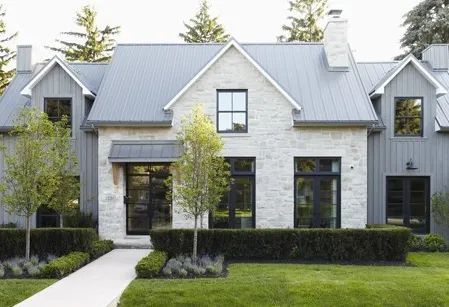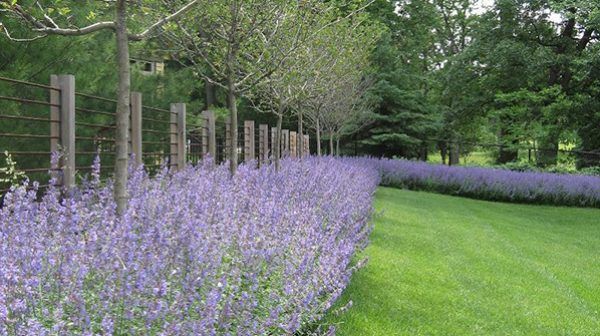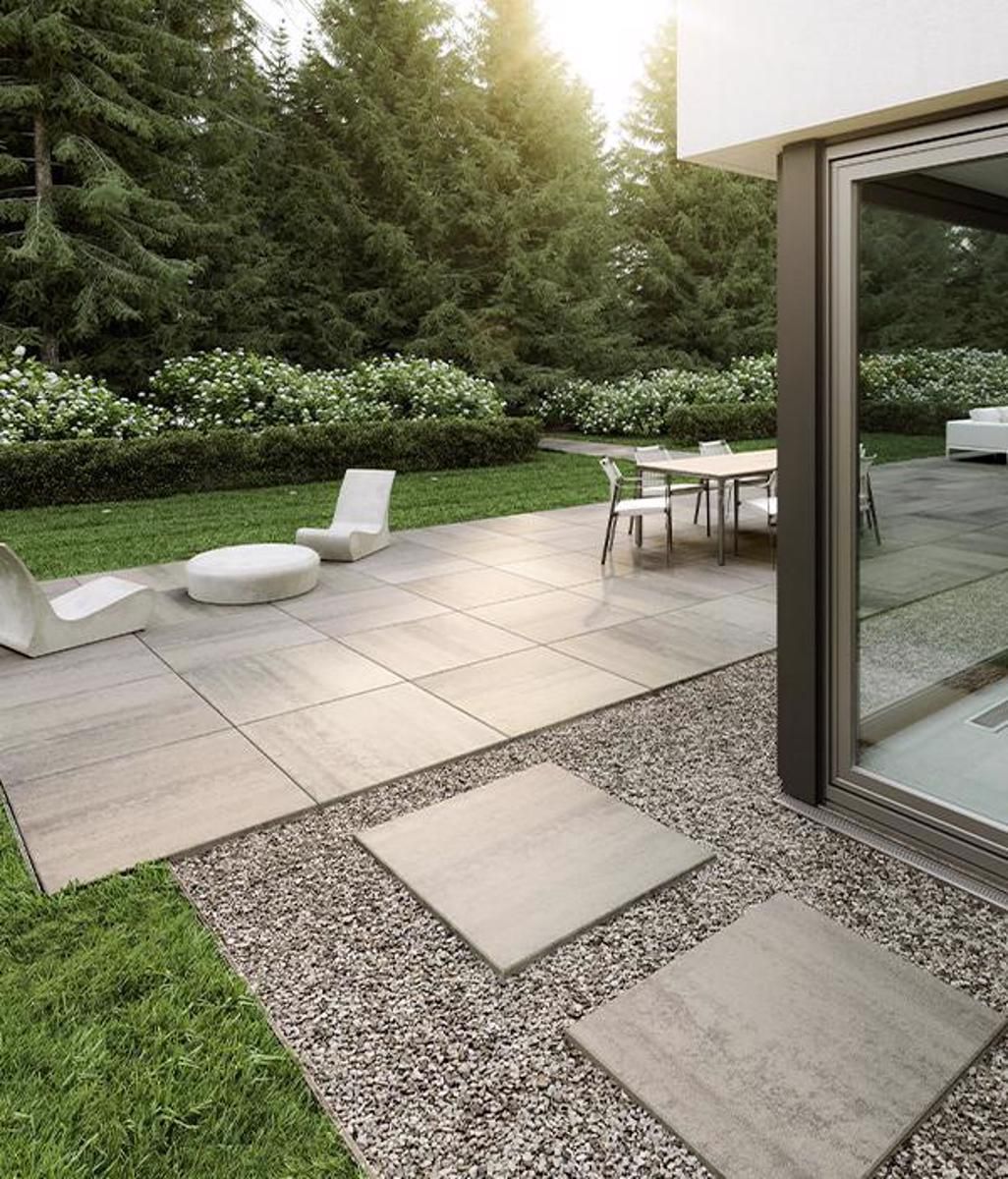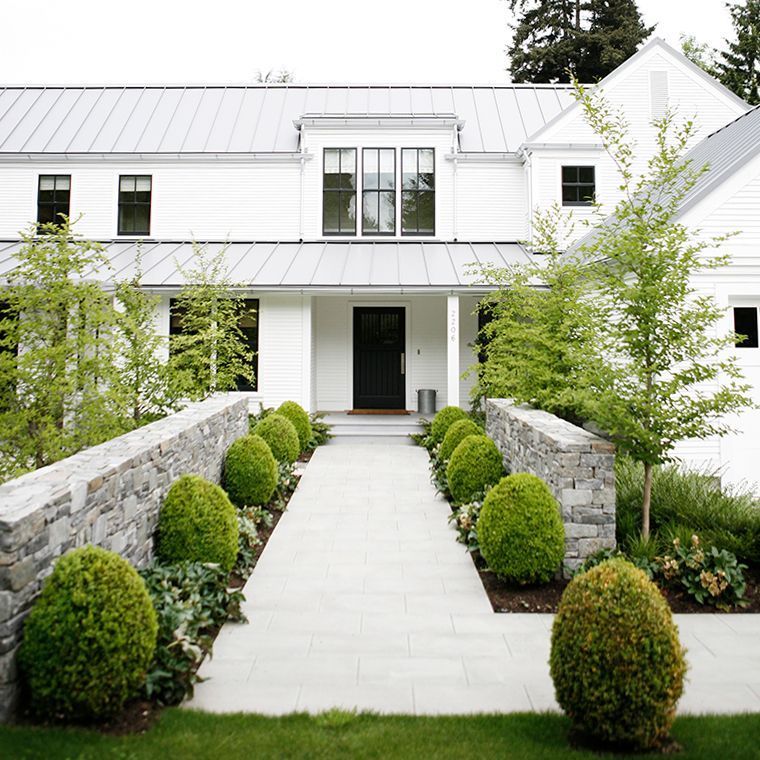Modern Landscaping Ideas
Serving clients in the Minneapolis, St. Paul, Edina, Plymouth, Minnetonka & Blaine areas
Modern Landscape Design Concepts
Modern style landscaping is most often used to compliment modern style homes. The goal is to create a unified sense a place with a modern look and feel throughout the entire property, by pulling the shapes and lines used in modern architecture into the landscaping itself.
Highlighting clean lines, minimalism, and the use of modern or industrial style materials, modern design style features strong geometric shapes and proportion, a limited color palette, and aims to create a sense of harmony and simplicity within the outdoor space.

Characteristics of Modern Landscaping
Modern style landscaping is defined by clean minimalistic look, the use of lines and shapes that are pulled from the architecture of the home itself and incorporating materials and design trends used in modern architectural design.
Common characteristics of modern residential landscape design include:
Clean lines and geometric shapes : Modern landscape design often features clean lines and geometric shapes, such as straight pathways, rectangular lawns, and symmetrical plant beds. This creates a sense of order and simplicity in the outdoor space.
- Minimalism and simplicity of design : Modern landscape design often incorporates minimalism and simplicity in design, which emphasizes the use of a limited number of materials, forms, and colors. This creates a sense of harmony and balance in the outdoor space.
- Unity : The color, shape, size and textures and other features of the space work together to create an integrated space.
- Balance : The size of the spaces and objects are in proportional relationship of the other objects in the surrounding landscape.
- Rhythm : Predictable, repeatable pattern sequences is a hallmark of modern landscape design. Rhythm easily leads the eye in a direction from one point to another on the landscape whether it’s a path leading to an entry or a view leading to a focal point.
- Order : Order is what ties the landscapes unity, balance, and rhythm together into a harmonious organization of symmetrical or asymmetrical landscape spaces.

Clean and Simple Elements of Modern Landscape Design
- Incorporation of outdoor living spaces : Modern landscape design often incorporates outdoor living spaces, such as patios, decks, and outdoor kitchens. This allows homeowners to enjoy their outdoor space for dining, entertaining, and relaxation.
- Architectural plants : Modern landscape designs often feature plants with strong growth forms that can provide focal points and help a bold symmetrical look in the landscape. Evergreen shrubs, ornamental grasses, topiary evergreens and birch trees are some commonly used plants in modern designs
- Use of landscape lighting : Lighting is an important element in modern landscape design. LED low-voltage lights can be used to highlight key focal points as well as other unique landscape features, such as: pathways, steps, bed-lines, water features, walls and plants.
- Outdoor fireplaces or fire pits : Modern style, clean ,simplistic outdoor fireplaces or fire pits are becoming increasingly popular in modern landscape design. They provide warmth and ambiance and can serve as a focal point in the outdoor space.
- Natural Cut stone Paving Materia l: large rectangular and square cut stone, such as limestone, bluestone, sandstone, granite, and basalt are popular materials in modern landscape design, because of their natural aesthetic. These types of cut and patterned flagstone can be used for pathways, patios, porches/steps, retaining walls and pool decks.
- Industrial materials : Modern landscape design incorporates materials such as: large square or re octangular stepping stones, concrete, steel and wood. Both rock and mulch are used in modern landscapes.
- Use of water features : Water features, such as pools, fountains, and waterfalls, can add a sense of movement and tranquility to modern landscape design. They can also serve as a focal point in the outdoor space.
- Incorporation of sustainable design elements : Many modern landscape designs try to incorporate sustainable design elements whenever possible, such as using low maintenance design concepts, xeriscaping and the use of native plants and local hardscape materials when possible.
All these elements are designed to create a sense of harmony and simplicity, as well as functionality and sustainability, in the outdoor space.
The use of these elements in modern residential landscape design can help to create a beautiful and functional outdoor space that matches the modern feel of the home.
Plants Used in Modern Style Landscape Design
Creating planting arrangements that highlight the home’s modern architecture by using complimentary lines and shapes to define bedspaces, is a key concept of modern landscaping.
When done correctly, planting design in modern landscaping will help pull the modern feel of the home down into the landscaping itself giving the entire property a cohesive sense of place.
Modern design also commonly uses large groupings of the same plant type, rather than mixing my plant varieties together.
This helps draw attention to the design of the entire plant bed and how each bedspace connects with other design elements in the yard, rather than focusing on each small plant.

Plants that work well in Minnesota will vary depending on the soil type and the amount of sun and shade the area receives. Here are some popular plants used in modern residential landscape design in Minnesota:
- Ornamental Grasses : Prairie Dropseed, Little Bluestem, Japanese Forest Grass, Golden Sedge and Switchgrass are just a few of the grasses that are popular in modern landscape designs in Minnesota. Because of their texture, structure and movement they can be used as a focal point in a garden bed, as a natural screens or to add a modern look to the outdoor space. Some of these grasses will also add winter interest to the landscape.
- Groundcovers : Pachysandra, Vinca, sedum groundcover and Hostas are useful in modern landscape design. They can be used to set the foundation for minimalist ground planes and add visual interest through color and texture to the outdoor space. Groundcovers provide a simplistic look that helps connect large spaces and creating continuity throughout large bed spaces.
- Shrubs : Shrubs are popular in modern landscape design in Minnesota because of their versatility and hardiness. They can be used for privacy screens, used as hedges, shaped as spheres, used as an accent plant, or as a focal point in the garden. Some examples include: Hydrangeas, Boxwood, Yews and Arborvitaes.
- Perennials : Perennials are popular in modern landscape design in Minnesota because of their ability to come back year after year. They can be used to add color and texture to the outdoor space. Some examples include: Salvia, Allium, catmint nepeta and Sedums.
- Trees : Trees are popular in modern landscape design in Minnesota because of their size and structure. They can be used to add shade, provide a focal point, or create a natural screen. Some examples include: Apollo Maple, Hawthorn Trees, Pagoda Dogwood, River Birch, Aspen and Paper Birch.
It's worth noting that the plants mentioned above are not only popular in Minnesota, but are also well adapted to Minnesota's climate and soil conditions.
It's important to consider the specific conditions of your site, such as sun exposure, soil type and drainage, when selecting plants for your modern residential landscape design in Minnesota.
Contact Us to Learn How KG can Help with Your
Modern Landscape Design Project
Give us a call today!


